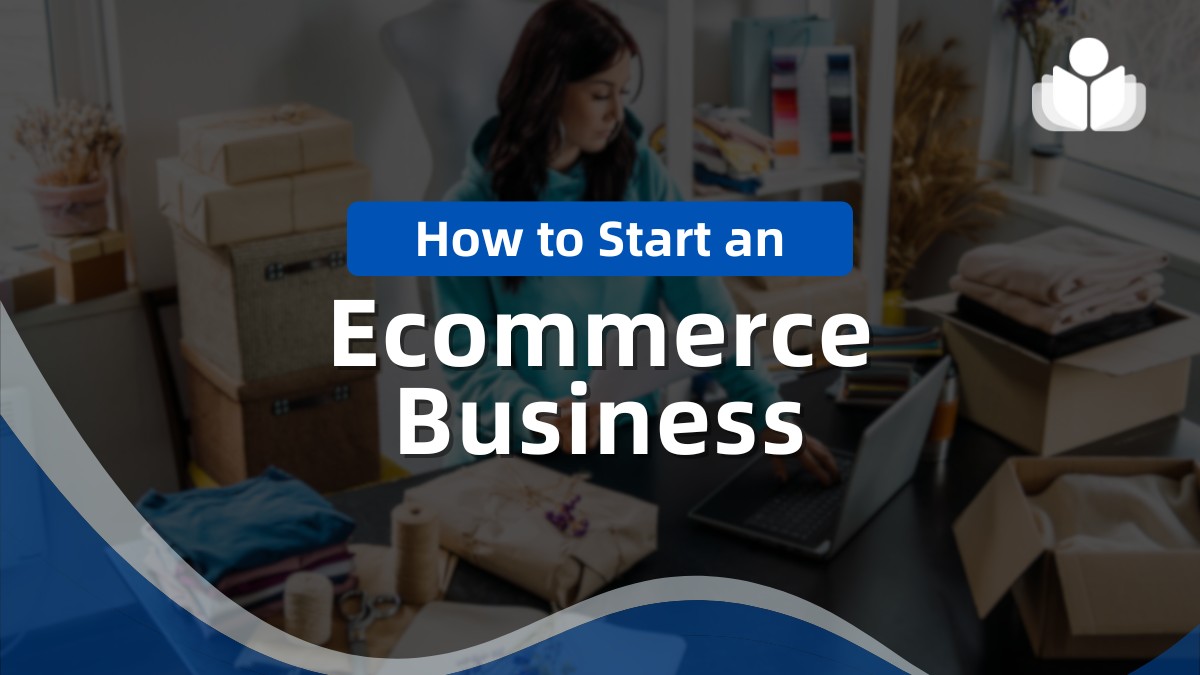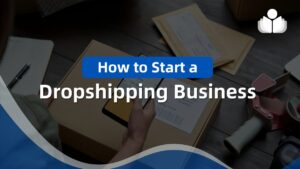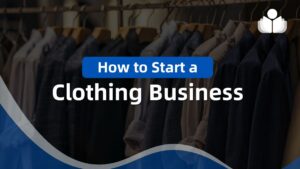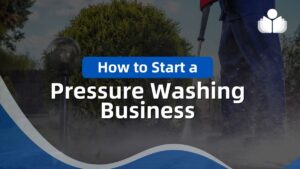Starting an Ecommerce business is a common dream, but creating an online store can seem overwhelming. To succeed in Ecommerce entrepreneurship, you need a clear understanding of the steps involved and when you’ll start making a profit.
>> Start an Ecommerce Business With Tailor Brands >>
What Is an Ecommerce Business?
An Ecommerce business functions via online platforms, enabling individuals and companies to trade goods or services online. It entails creating a digital storefront for customers to browse and buy items, managing inventory, fulfilling orders, and ensuring prompt delivery.
Key elements include ensuring secure digital payments, offering customer support, and implementing marketing tactics to attract customers. Security measures are vital to protect sensitive transaction information. Ecommerce businesses provide convenience, accessibility, and global outreach, transforming conventional commerce using Internet capabilities.
>> Get Started With Tailor Brands >>
Pros of Launching an Ecommerce Business
- Operate your business anytime, anywhere
- Customers reach your business from any location, any time
- Experience minimal startup expenses
- Enjoy low overhead costs
- Sell your product globally or nationally
- Offer personalized online experiences
- Re-target potential customers with digital ads
Cons of Launching an Ecommerce Business
- Due to the absence of in-store experience, customers cannot test products before purchasing.
- Website crashes pose a risk, potentially rendering your business inactive for extended periods.
- Increased competition arises as customers can swiftly compare prices.
- Customers face delays in product delivery.
- Online shopping exposes customers to various cybersecurity risks, such as identity theft and denial of inventory attacks.
Regardless of whether you run an online store or operate solely from a physical location, safeguarding your business is essential.
How to Start Your Ecommerce Business?
Step 1: Explore Ecommerce models and select products
Step 2: Establish Your Shipping Plan
Step 3: Develop a business blueprint
Step 4: Select a business name and begin brand development
Step 5: Complete business registration
Step 6: Build your Ecommerce site
Step 7: Acquire and refine your offerings
Step 8: Introduce and promote your business
Step 1: Research Ecommerce Models and Decide What to Sell
Considering the vast Ecommerce landscape today, deciding on your business model is crucial. Four fundamental types exist:
- Business-to-customer (B2C): Businesses sell products directly to consumers, from spices to shoes. Examples include Amazon, Walmart, and Alibaba.
- Business-to-business (B2B): Businesses sell products or services to other businesses, often with recurring orders. Examples include Amazon Business, Alibaba, and Rakuten.
- Customer-to-customer (C2C): Online marketplaces connect consumers to exchange goods and services. Examples include Craigslist, Etsy, and eBay.
- Customer-to-business (C2B): Individuals sell goods and services to companies. An example is Upwork, which helps businesses hire freelancers.
In Ecommerce, successful sellers focus on particular market segments. These niches are areas where other businesses need to meet customers’ needs. The narrower your product niche, the fewer competitors you’ll have, increasing your chances of success.
Your business model should align with your Ecommerce niche. Not all business models suit all products. For instance, dropshipping isn’t suitable for handmade sweaters, and subscriptions for artisan coffee tables are likely to attract few customers. You need a niche large enough to have a substantial target audience but small enough to limit competition.
Identifying your niche starts by selecting a product market and narrowing it down. Look for target products that:
- You can create at a high-quality
- You like creating, even on a large scale
- Target a small market with minimal competition
- Fulfill people’s wants or needs
- Generate profits
Step 2: Determine Your Shipping Strategy
The scope of Ecommerce selling extends beyond regular retail. Your choice of Ecommerce sales channel plays a crucial role. You might discover that one of these options fits your requirements best:
Direct-to-consumer (DTC): Ecommerce stores directly produce and ship items to customers, bypassing intermediaries.
Dropshipping: Sell products without inventory by having suppliers ship directly to customers upon order.
Print on demand: Have custom-printed products made and shipped by a print-on-demand service.
Retail arbitrage: Purchase from physical stores and sell online at higher prices, demanding more effort.
Wholesaling: Sell bulk products to retailers, benefiting from discounts but requiring significant initial investment.
Subscriptions: Recurring sale of products or services, commonly monthly curated boxes or online courses.
Private label: Pay a third party to make products with complete control over specifications and packaging.
White label: Buy items in bulk, rebrand them with your company’s name and logo, sacrificing some control.
Once you’ve selected a platform, address the shipping process. Confirm whether your chosen Ecommerce website builder includes features for printing shipping labels or incorporating shipping fees into orders. Assess your own shipping expenses and identify any destinations that may be financially unfeasible to ship to.
>> Get Started With Tailor Brands >>
Step 3: Write a Business Plan
Once you’ve selected your product niche and determined your shipping approach, it’s time to draft a business plan. Consider the business plan as a tool for refining your ideas into a cohesive strategy.
It guides your investment decisions and outlines your customer outreach strategies. A typical business plan consists of six key components:
- Business Description: Information about your company’s structure, industry, and background
- Mission statement: A compilation of your business’s core values and objectives
- Competitor research: Specifics regarding your competitors and their strategies
- Business roadmap: A timeline outlining your business’s growth plans
- Product descriptions: Descriptions of your products or services and logistical plans for delivery
- Financial projections: Projections for pricing, sales tactics, profit targets, and investor information
Step 4: Choose a Business Name and Start Building Your Brand
Your business should have a name and brand identity. This is especially important for those starting white-label Ecommerce businesses.
Choosing a business name is enjoyable but requires strategic thinking. Along with a unique yet clear name that explains your product, check if the web domain, social media handles, and legal name are available. Research to ensure it translates well across cultures, especially for global expansion.
For your brand, design a logo to be used on all packaging, website design, and marketing materials. Eventually, consider hiring a designer who can translate your brand’s ethos into attractive web visuals.
Before you build your online store, understand the basics of search engine optimization. This will help you properly structure your site and pages for Google and other search engines.
Step 5: Register Your Business
To start selling, you must register your business. This involves selecting a legal structure, applying for an employer identification number (EIN), and obtaining permits and licenses relevant to your chosen business model.
If you find this step burdensome, consider using a business registration service. These services offer expertise, save time, ensure legal compliance, provide convenience, may be cost-effective, offer additional support services, and enhance business professionalism and credibility. They simplify the setup process, allowing entrepreneurs to focus on other business aspects while meeting legal requirements efficiently.
Below are some reputable business registration services to help you save time:
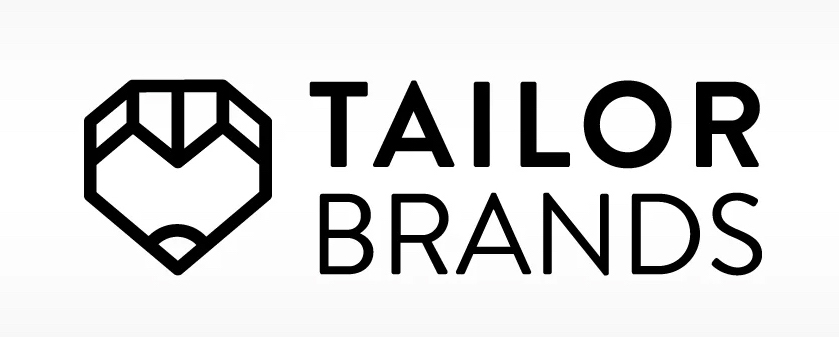
Tailor Brands provides entrepreneurs with a user-friendly platform for registering businesses online. Its simple step-by-step process guides users through legal requirements and necessary paperwork, helping establish businesses as separate legal entities. Users can get a tax ID number, register for licenses and permits, and access additional resources for business success.
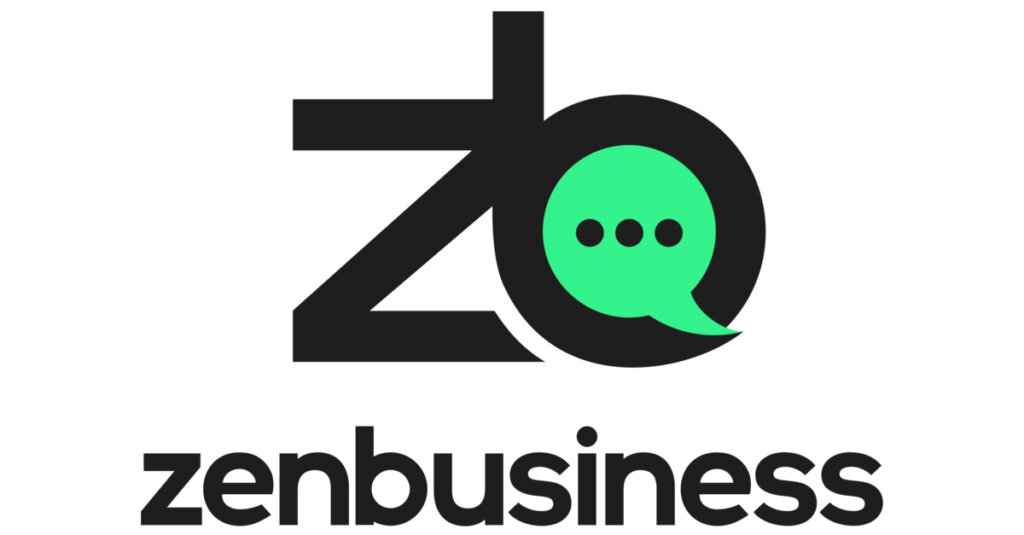
ZenBusiness stands out as a top choice for registration services because it offers quick business filing and affordable incorporation. Its customer support is available throughout the process to assist with inquiries, though legal advice isn’t provided.
Beginning a business may seem simpler than keeping it going, but ZenBusiness provides tools to streamline management. Whether it’s handling tax paperwork or acting as a registered agent, the company can lend a hand, easing your workload.

Northwest Registered Agent stands out as a business formation service for its commitment to transparency and customer-centric approach. The company openly shares its pricing details and prioritizes responsive customer support to ensure accuracy from the start. It emphasizes safeguarding your confidential data.
Step 6: Create Your Ecommerce Business Website.
Once you’ve identified your market, refined your niche, selected your product, and prepared to generate inventory, the next step is to pick a platform and establish your Ecommerce store.
Choose an Ecommerce Platform
Many platforms exist for launching an online store. Selling on marketplaces, crowdfunding sites, or other Ecommerce alternatives is possible without owning your own online storefront. Here are some Ecommerce platforms to consider:
- Shopify: This well-known Ecommerce platform offers many customization options and is easy to use. You can pick a subscription based on your business needs.
- Squarespace: Squarespace, primarily a website builder, also supports Ecommerce. It’s simple to use but has fewer Ecommerce features than Shopify.
- WooCommerce: WooCommerce is a free plug-in for WordPress that enables online selling. It offers various Ecommerce tools and suits those with technical skills.
- Magento: For those skilled in technology, Magento is an open-source platform allowing extensive store customization.
Set up Your Website
The platforms mentioned above fit into one of two categories, each with its own setup requirements.
- You can use a standard website builder such as Wix, Weebly, Squarespace, or WordPress. Your website can include sections for your store’s functions alongside other content. For instance, if you’re a photographer selling prints and posters alongside your main work, your site can showcase your store and pages with your biography, portfolio, booking info, recordings of classes or talks, and online course sign-ups.
- For Ecommerce selling, it’s advisable to choose a specialized platform like Shopify or WooCommerce. These platforms provide similar features as general website builders, such as About pages, image displays, and blogs. They offer advanced Ecommerce features and integrations, like shopping cart software, to boost your sales and gain momentum for your store.
>> Start an Ecommerce Business With Tailor Brands >>
Step 7: Source and Develop Your Products or Services.
After setting up a prototype of your website, you can start adding your product names, descriptions, and photos. You’ll also need to acquire your products, either by producing them yourself or sourcing them from a wholesaler.
Craftspeople should aim to generate sufficient inventory for the initial months. This could involve making one of each color and size for a clothing line or twenty of each ceramic pot. The quantity will depend on your labor capacity and marketing approach, such as the level of traffic directed to your website’s launch.
Target Inbound Sales Leads
Inbound sales strategies aim to attract people to your business, rather than seeking them out. These methods include search optimization (SEO), paid search, social media, email marketing, and content marketing. Through these channels, you show how your product addresses customer needs or improves their daily experiences.
Use What You’ve Got
Small business owners often have busy schedules. To stay on track, they must make the most of their resources and create various marketing materials from a single asset. For instance:
- Document your daily tasks and behind-the-scenes moments to create a library of content for your social media and website visuals.
- Transform your research on business-related topics into marketing emails or SEO posts to maximize its value.
- Convert newly designed marketing assets, such as email layouts or Instagram Stories, into reusable templates for future projects.
- As a small business owner, prioritize efficiency by repurposing content to save time and focus on refining your business strategy and expanding your company.
Step 8: Launch Your Business
Upon launching your business, start tracking your metrics and key performance indicators (KPIs) as it grows. Keep experimenting with various digital marketing methods to attract visitors to your brand.
Alongside managing inventory, logistics, and marketing, ensure smooth shipping and fulfillment for all customers. Prepare contingency plans in case of any issues.
How Much Does It Cost to Start an Ecommerce Business?
Starting your own Ecommerce venture involves investing time and resources, potentially yielding substantial returns if customers engage with your brand. Establishing an online business typically spans about two years before profitability. Initial expenses include:
- Licenses and permits: The legal documents you need will vary based on your business type, location, and products. Costs range from $50 to hundreds.
- Ecommerce platform, domain name, and hosting: Shopify costs $29/month for basics and $79/month for regular plans. Open-source options are free to download but involve hosting and developer fees. Some platforms bundle domain and hosting, while others require separate purchases. Domains start at $1/year, hosting from a few dollars to $700/month.
- Product inventory: Balancing enough inventory to sell without overstocking is crucial and may require warehouse space and equipment.
- Shipping: Costs vary based on products, sales, services, speeds, and integration with your Ecommerce platform. Outsourcing shipping is an option to focus on other aspects of your business.
- Marketing: New businesses often allocate up to 30% of their budget to marketing, though starting with free resources and experimentation is wise.
- Employees: You may manage your business alone or with minimal help. Growth may prompt hiring shortly after launch or remaining a sole proprietor.
In Ecommerce, costs are typically lower than in brick-and-mortar stores. Rent and inflation are rising, and consumer shopping habits are changing. Ecommerce offers the potential for higher ROI. Starting up can require tens of thousands of dollars. Entrepreneurs can self-fund, seek help from loved ones, or apply for loans.
How to Tell if Ecommerce Is Right for You?
Some children struggle with homework but excel in exams, just as certain individuals flourish when their business success determines their livelihood. Comparing employment to entrepreneurship reveals no definitive superiority; rather, it’s about finding what suits you best.
Check out this simple self-assessment to gauge your suitability for starting an Ecommerce business:
- Do you enjoy your work? You will spend many hours on it, every day. You need to put in hard work to start your business. If you’re not genuinely passionate about your product, you’ll feel unhappy soon.
- Are you disciplined? Being your boss isn’t easy, especially in Ecommerce. Unlike traditional businesses where coworkers and managers keep you accountable, Ecommerce can be isolating. It’s easier to stay motivated when you interact with customers or a small team.
- Do you have many commitments? Working remotely may not seem like real work to some. To run an online store, you need clear boundaries and the ability to say “no” when necessary.
- Can you handle financial risk? Starting a side business while working is one thing. But if you’re fully transitioning to entrepreneurship, be prepared for several months or even a year with little income. If you have debts or a family to support, there might be better career options.
>> Start an Ecommerce Business With Tailor Brands >>
5 Tips for Starting an Ecommerce Store
Starting an Ecommerce venture is exciting. Remember, these tips whether it’s your first or fifth time:
- Year-one profitability is not important
- Understand your target audience
- Offer products that people want
- Try different marketing and advertising strategies
- Spend on reaching out and building links
1. Forget About Year-One Profitability
Launching an Ecommerce business is a long-term endeavor, not a quick win. Instead of focusing solely on profit in year one, allow 18 to 24 months for your business to gain traction. Use the initial year to test, refine, and reinvest your sales following the budget recommendations provided above.
2. Know Your Target Audience
Apart from creating or finding products, most of your time will be devoted to attracting customers. Your goal is to reach the right customers, those who will make purchases on your website. Knowing your target audience can accelerate reaching them and boosting sales.
3. Sell an In-Demand Product
Discover or market an exceptional product with shown demand. Analyzing leading retailers like Allbirds, Tushy, and Bombas, they all offer high-quality items.
According to Eric Even Haim, CEO of ReConvert, product excellence is crucial as it facilitates natural sales. Aligning a superior product with a receptive audience simplifies marketing efforts.
Eric emphasizes that new products needn’t be groundbreaking; focus on burgeoning trends and untapped markets. Introduce outstanding products to fulfill customer needs effectively. Market demand can be identified in two key areas:
- Use Google Trends to explore topics people search for
- Trends. Co predicts trends and business opportunities using data before they gain popularity
>> Start an Ecommerce Business With Tailor Brands >>
4. Experiment With Marketing and Advertising
Promoting your new business post-launch is crucial. Experiment with various marketing strategies to pinpoint your audience’s preferences and locations.
- Affiliate marketing
- Advertising on Instagram
- Using website pop-ups
- Offering upsells and cross-sells at checkout
- Appearing in organic search results
- Marketing through content creation
- Implementing loyalty programs
After launching your new business, it’s crucial to spread awareness. Experiment with various marketing tactics to identify your audience’s preferences and engagement patterns. According to Stephen Light, CEO and co-owner of Nolah, success hinges on your willingness to test and analyze advertising methods.
Embrace the possibility of making mistakes, particularly in the initial stages. Use gathered data to enhance your campaigns and boost traffic and revenue.
5. Invest in Outreach and Link-Building
Promoting your new business post-launch is crucial. Experiment with various marketing strategies to identify your audience’s preferences.
For new Ecommerce ventures, having a plan for outreach and link-building is vital. These methods can improve your Google SEO rankings.
According to UK SEO consultant James Taylor, establishing link-building strategies early helps search engines view your website as an authority in its field. More links from reputable sites enhance your credibility.
James advises Ecommerce owners to prioritize digital PR and link-building campaigns for sustained SEO success. This effort boosts Google rankings, drives organic traffic, and increases sales.
FAQs
Start Your Ecommerce Store: Bottom Line
Creating a thriving Ecommerce venture is both thrilling and demanding. You’ll discover selecting a product, assessing its potential, arranging production, constructing your online store, and promoting to fresh markets. Though it may seem puzzling, the rewards are worth it.
Our Ecommerce business manual aims to guide your path. Remember, the key is to begin and relish the process.
 Sections of this topic
Sections of this topic
